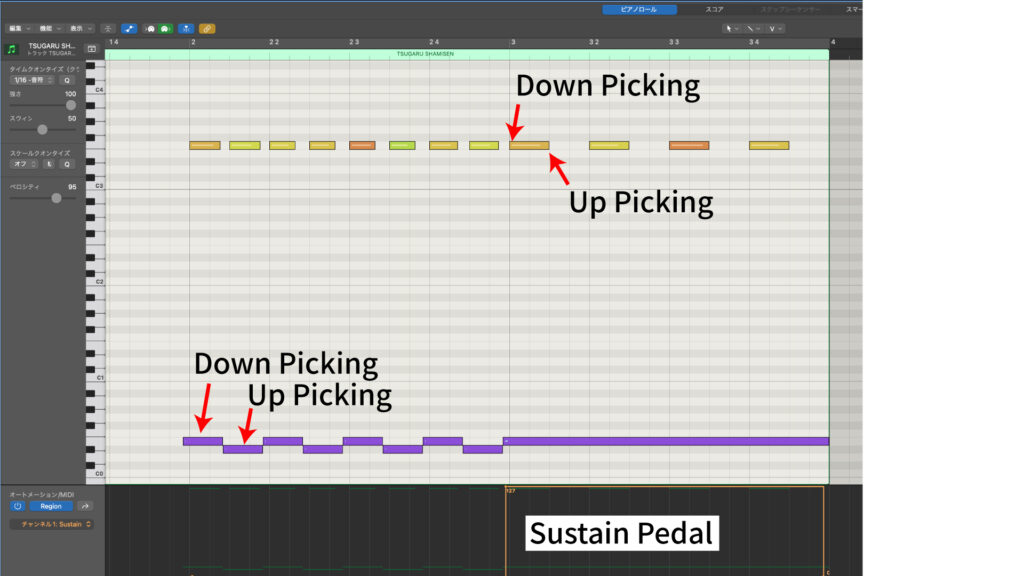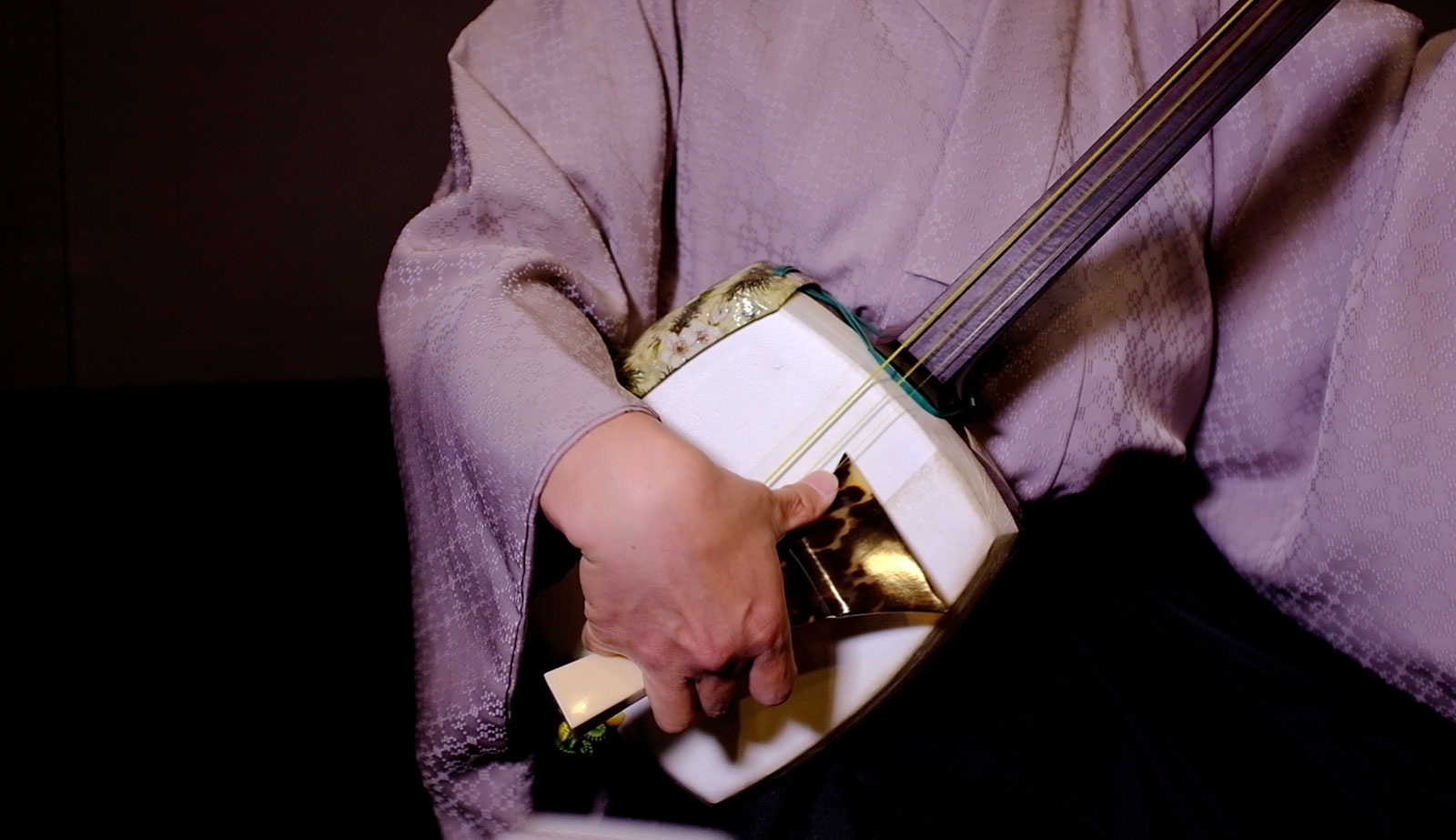
TSUGARU SHAMISEN Fundamentals 1: Digging into the Sukui and Hajiki Articulations
TSUGARU SHAMISEN Fundamentals 1: Digging into the Sukui and Hajiki Articulations
The tsugaru shamisen’s incredible dynamics make it a perfect choice for modern pop and rock music. Our TSUGARU SHAMISEN library puts all of the instrument’s amazing sounds at your fingertips.
TSUGARU SHAMISEN has been designed to give you access to a huge range of authentic sounds and performance styles directly from your keyboard. But with a bit of knowledge about the instrument’s articulations as well as its construction and behavior, you can get an even richer variety of sounds and nuances from the library.
This tutorial looks at two foundational tsugaru shamisen articulations — sukui and hajiki — along with a must-know fill that combines the two techniques.
You can follow along with screenshots and audio examples taken straight from the TSUGARU SHAMISEN library. So let’s dive in!
What is the sukui technique?
Most of the time the tsugaru shamisen is played with downstrokes, called uchi — hitting the strings [gen] from the top down with the wooden plectrum [bachi]. Sukui [which means to scoop up in Japanese] is the opposite motion; striking the strings on the way up. It’s the same as an upstroke on a guitar.
Compared to uchi downstrokes, sukui are somewhat quieter and the attack is softer and warmer. Phrases are rarely played with all sukui strokes. Far more often, a phrase will start with a downstroke followed by a sukui or other articulation.
In the TSUGARU SHAMISEN library, sukui is called Up Picking, which can be activated at any time with the D#0 key switch. However, it’s usually easier to make use of the Alternate Picking function. On the play pane, select Key off Alternate Picking (it’s selected by default) to engage the Alternate Picking function. The way it works is when you play a note with the Down Picking articulation while holding down the sustain pedal (MIDI CC #64), a sukui upstroke will be played automatically at the Key off (note off) event.
In the audio example below, you can clearly hear the sukui in the MIDI pattern shown in the screenshot.
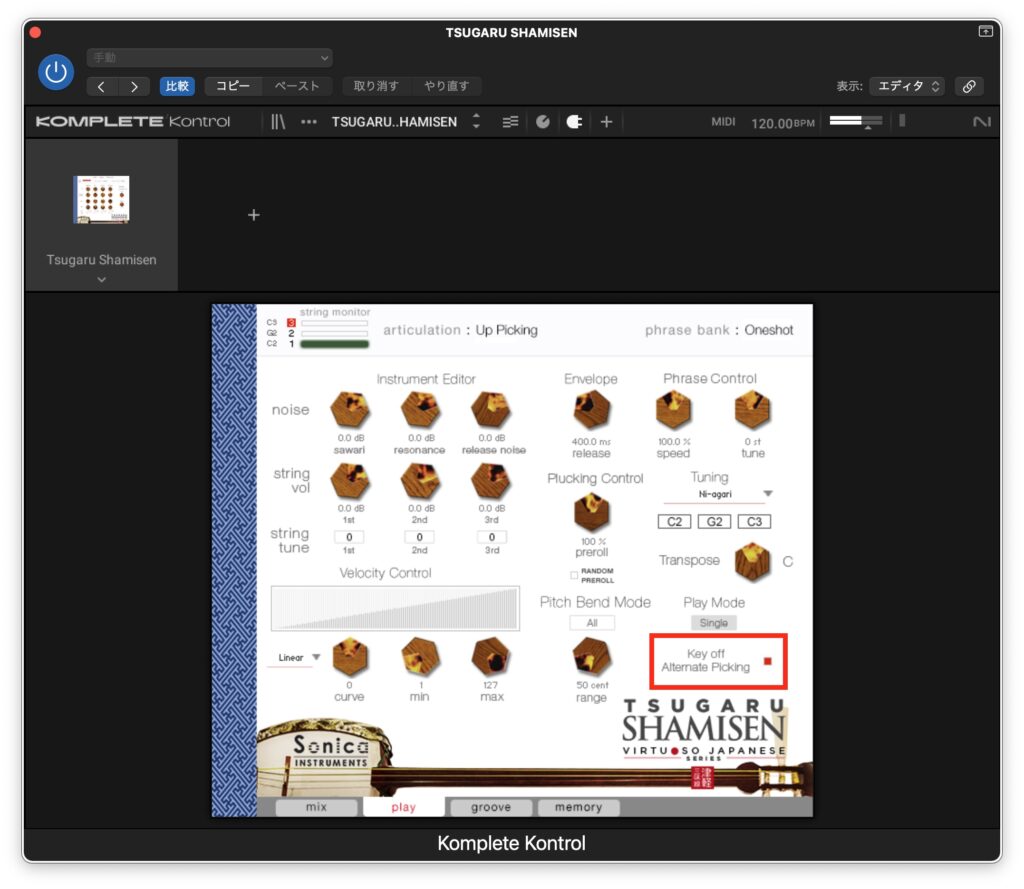
Audio Example
The first half of the example uses the D#0 key switch to play sukui upstrokes. The second half uses the Alternate Picking function and the sustain pedal.
The Alternate Picking function does more than reduce the notes and key switches you need to play. Because the sukui upstrokes happen at the note off event, you have more control over the groove of the phrase. By changing the Down Picking duration, you can easily add real shamisen nuance to your performance.
As a side note, the sukui technique is not limited to the tsugaru shamisen. Similar upstrokes are used on many Japanese string instruments. The koto, for example, has a technique called the sukuizume, where the back side of the pick is used to pull the string up from underneath. This articulation is included in our KOTO 13, KOTO 20, and KOTO 17 libraries.
The hajiki technique
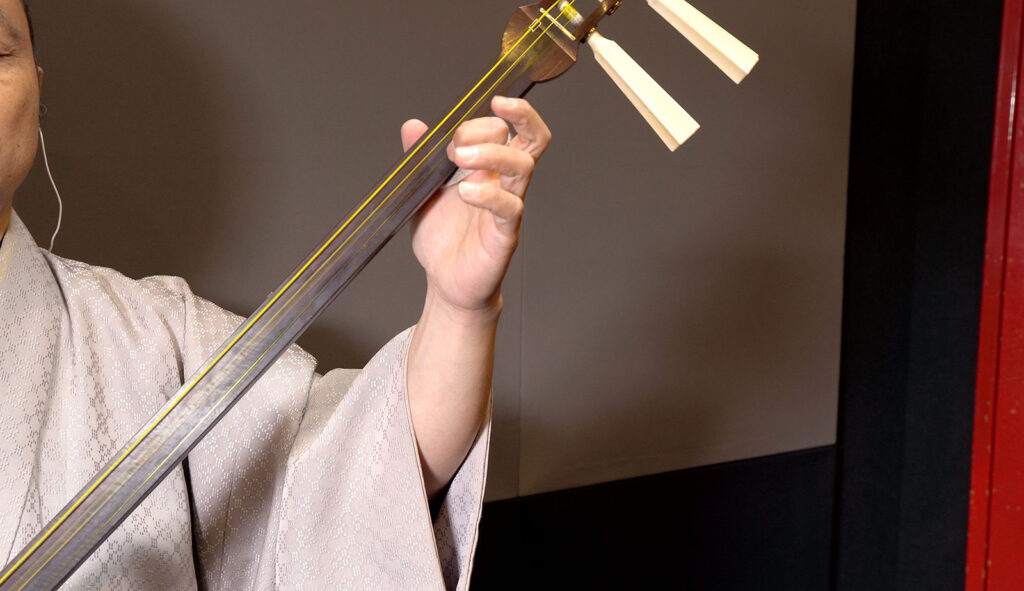
Hajiki is similar to hammer-ons and pull-offs on a guitar. The left-hand index, middle, or ring fingers are used to pluck and sound the string. The hajiki has a softer attack because the string isn’t struck with the bachi.
Like sukui upstrokes, hajiki is used with other techniques to form a phrase.
In the TSUGARU SHAMISEN library, F#0 is used to switch to the Hajiki (Hammering /Tapping) articulation. Hajiki will also be played automatically when a legato phrase is entered with overlapping notes on the same string. The audio example below uses the MIDI data shown in the screenshot. The first repetition is played with all downstrokes, while the second uses hajiki in the legato portions to move between the notes.
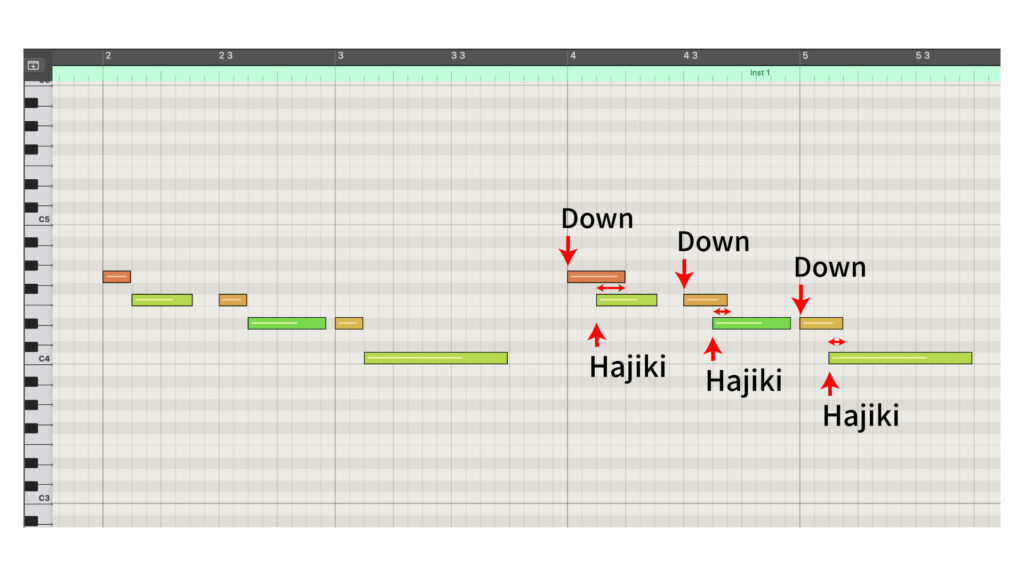
Audio Example
Putting sukui and hajiki together
Combining these two techniques will make your phrases really sound like a tsugaru shamisen being played. Here, we’ll introduce one of the most common tsugaru shamisen fills called the 4-3-0-0 (also known as the kamashi or chiritara). You can drop it into nearly any phrase for that quintessential tsugaru shamisen sound.
The numbers 4, 3, and 0 represent the positions on the neck where the notes are fingered. (0 means the string is played open.) This figure shows the fill notated on a score.
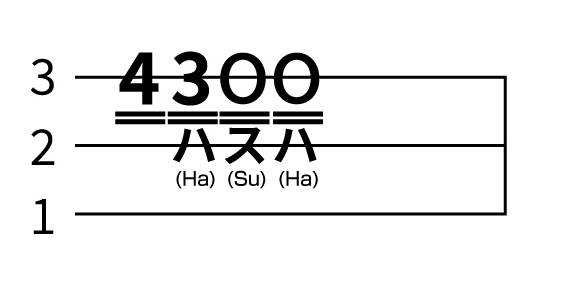
This notation style is like a guitar or bass TAB, where the lines represent the strings and the numbers represent the notes played. However, there are two differences. Because the tsugaru shamisen does not have frets, the numbers refer to the tsubo — the position where the note is fingered.
The other difference is the strings are numbered in reverse order to a guitar or bass. The first string on the tsugaru shamisen is the lowest pitch string and the third is the highest pitch string.
A letter under a number indicates the articulation to be played. For example, Ha means hajiki and Su means sukui. A downstroke is assumed if there is no letter.
In the 4-3-0-0 fill, the 4 is struck with a downstroke, followed by a hajiki for the 3, a sukui stroke for 0, and a hajiki again on the last 0. On a piano roll, the fill looks the screenshot below. The audio example plays the fill four times. The first two are played slowly and the last two in double-time.
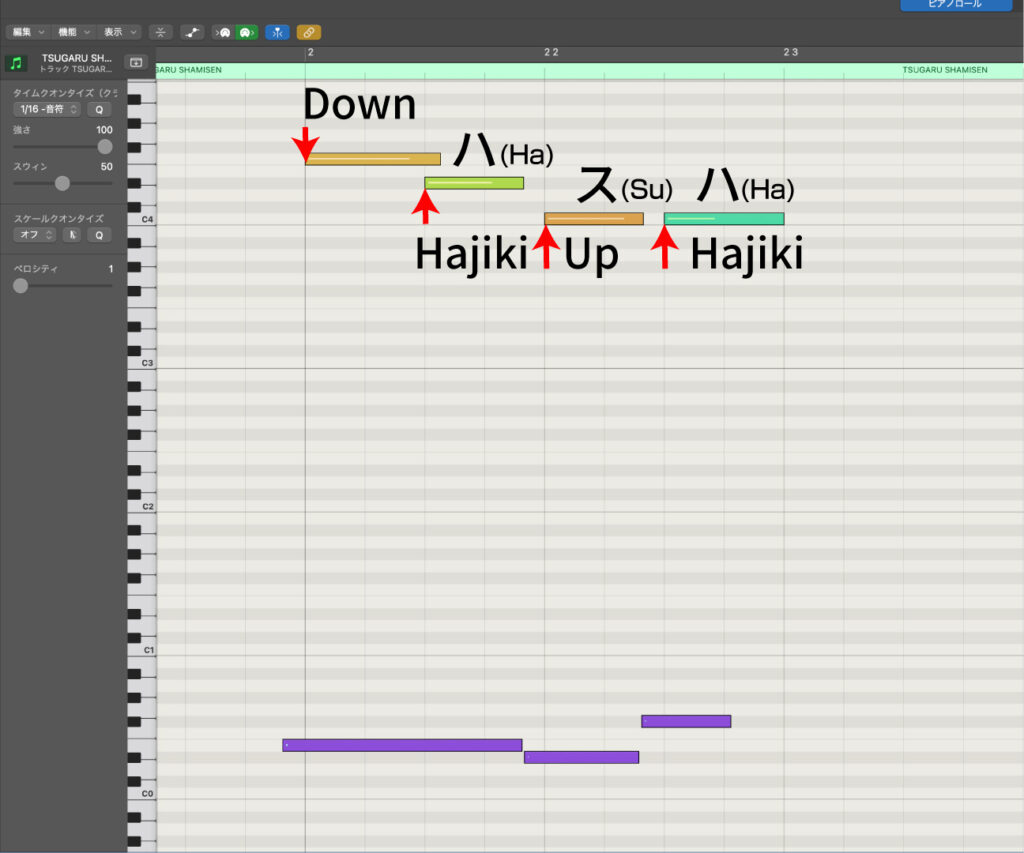
Audio Example
This example uses ni-agari tuning (C, G, C). The fill is played on the third string, so the notes are F at the fourth tsubo, D# at the third tsubo, and C for the open string.
There are endless variations on this fill, such as playing it on the first or second string or changing the order of the notes. Experiment with the fill and add it to your own phrases for more of that unmistakable tsugaru shamisen spice.

